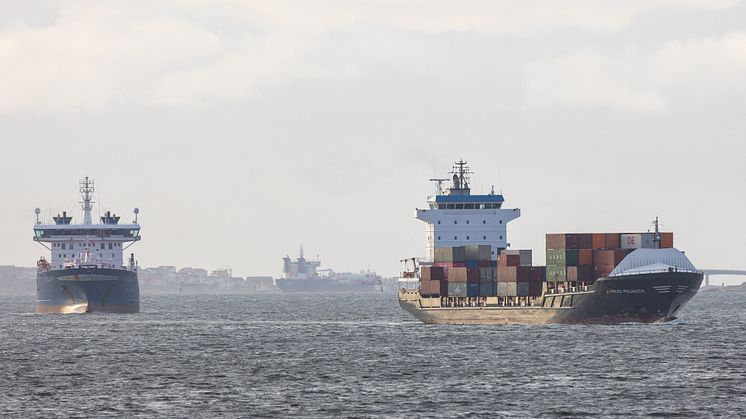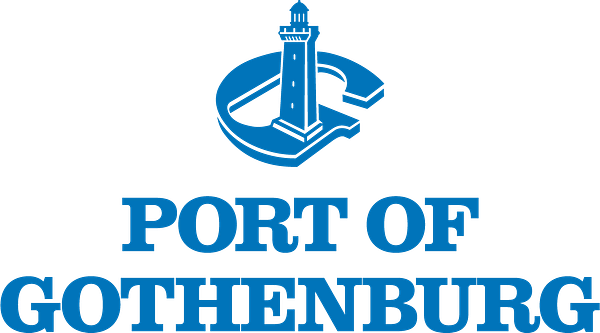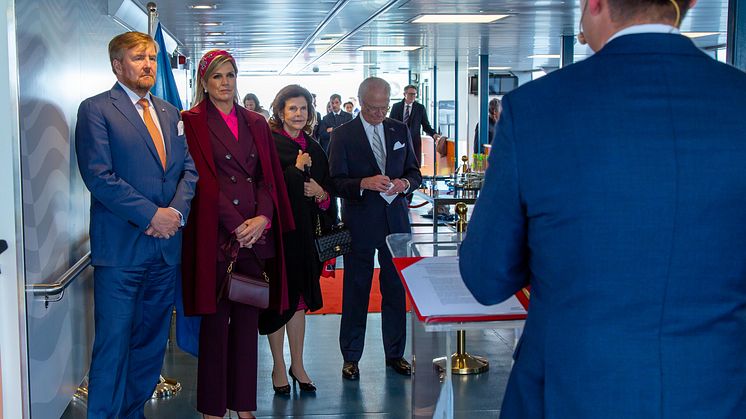
Press release -
The Port of Gothenburg and the Port of Rotterdam kick off Green Corridor initiative for sustainable shipping
The Port of Gothenburg and the Port of Rotterdam have signed a Memorandum of Understanding (MoU) for the realization of a Green Corridor to support sustainable shipping between the two ports. The MoU – signed in the presence of their majesties King Carl XVI Gustaf and Queen Silvia of Sweden and King Willem Alexander and Queen Maxima of the Netherlands – will also further strengthen the ports ongoing cooperation on decarbonization and digitalization.
As part of the Green Corridor initiative, the ports will establish a common framework for cooperation to stimulate the use of new alternative fuels which are needed to reach full maritime decarbonization and contribute substantively to the goals of the Paris Agreement.
The Green Corridor initiative is also supported by the Clydebank Declaration signed by both Sweden and the Netherlands at COP26, stating that countries shall promote the climate transition of the shipping industry by supporting and encouraging green shipping corridors.
The parties intend to connect the Green Corridor between Gothenburg and Rotterdam to a larger network of deep-sea corridors, including the European Green Corridors Network launched in March this year by the Mærsk Mc-Kinney Møller Center for Zero-Carbon Shipping, for which the Port of Gothenburg recently became mission ambassador. Rotterdam recently also launched a large Green Corridor initiative with the Maritime & Port Authority of Singapore.
Both ports are already actively involved in the development of more sustainable fuels for shipping. Port of Gothenburg facilitates the bunkering of methanol for RoPax ferries on a smaller scale since 2015, and published general methanol operating regulations for ship-to-ship bunkering on a larger scale earlier in the year. The Port of Rotterdam launched the world’s first barge-to-ship methanol bunkering operation in May 2021.
The MoU was signed in Gothenburg on Thursday during a Dutch state visit to Sweden, in the presence of their majesties King Carl XVI Gustaf and Queen Silvia of Sweden and King Willem Alexander and Queen Maxima of the Netherlands.
The state visit took place in parallel to the chainPORTS summit in Gothenburg, where the ports together with eight other major ports from around the world also discussed how they can contribute in accelerating the availability of green hydrogen in Europe to decarbonize industry and transport, and how to further develop and connect their respective digitalization agendas.
Elvir Dzanic, CEO of the Gothenburg Port Authority: “As one of the world’s most sustainable ports since many years, we are happy to share and spread our experience, as well as taking steps forward and joining forces with other world ports like the Port of Rotterdam. By fulfilling the pledges of the Clydebank Declaration from COP26 through green corridors, we can now present a more distinct path towards the decarbonization of shipping.”
Allard Castelein, CEO of the Port of Rotterdam: “This Green Corridor initiative is part of our ongoing efforts to bring together parties across the supply chain to help realize more sustainable shipping in support of the Paris Agreement. We are very pleased to further expand our ongoing cooperation with Gothenburg on sustainability in this way and we look forward to bringing more parties on board.”
Topics
Fact file: Port of Gothenburg
The Port of Gothenburg is the largest port in Scandinavia. Around 30% of Swedish domestic and foreign trade passes through the Port of Gothenburg and over 50% of all container traffic. The port is a full-service port, and offers industry guaranteed, climate-smart access to the whole world. Direct services to key markets ensure highly efficient, sustainable, and reliable transport 24 hours a day, 365 days a year. The focus is firmly on sustainability, innovation, and digitalisation in a concerted effort to maintain the ongoing development of climate-efficient freight transport and calls by vessels. With over 30 rail shuttles offering daily departures, companies throughout Sweden and Norway have a direct, climate-neutral service to the Port of Gothenburg. The port handles energy products, vehicles, ro-ro units, containers and passengers. 22,000 people are employed at the port.
Follow us on:
Facebook
Instagram
LinkedIn
Twitter
www.portofgothenburg.com



